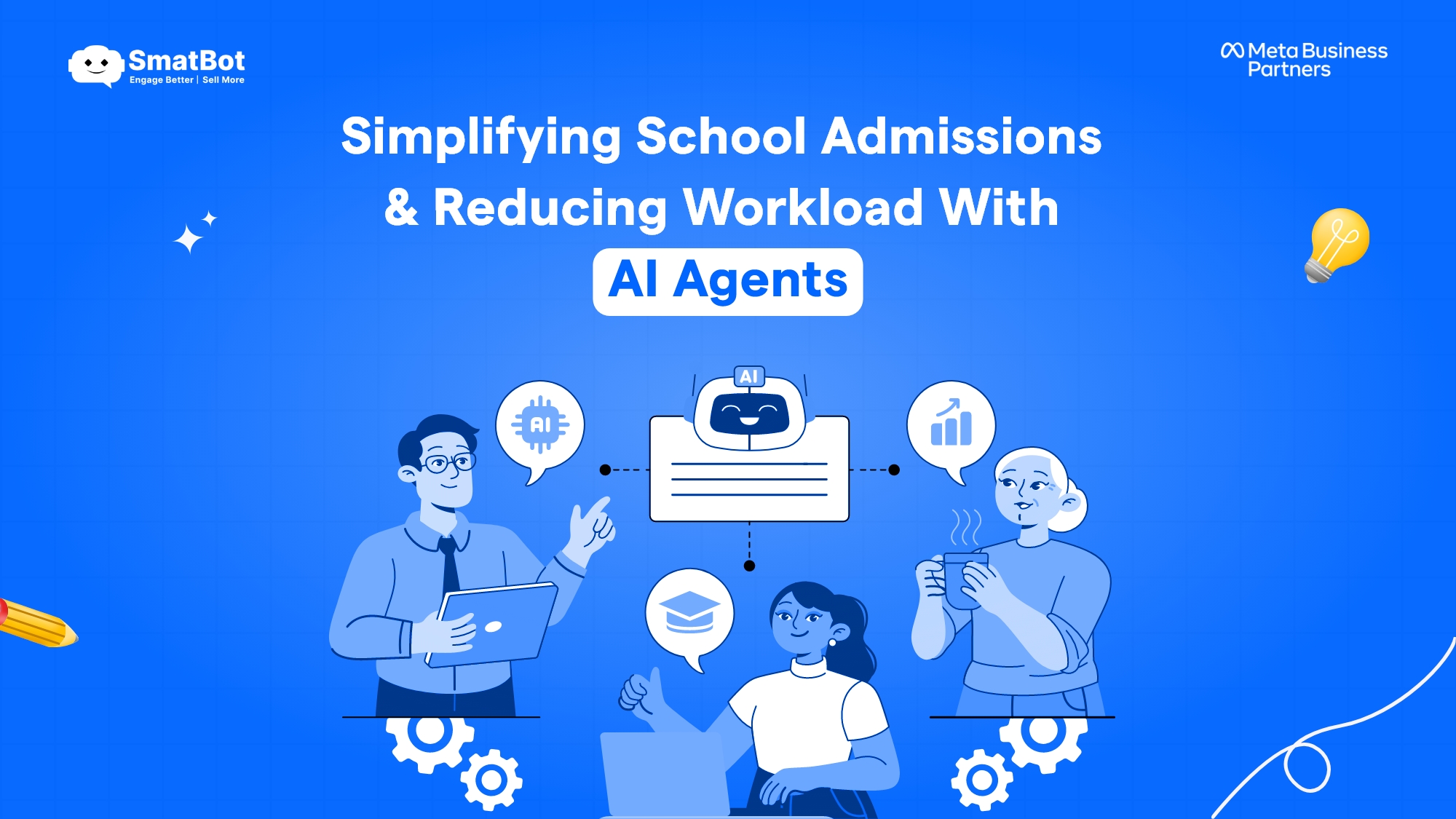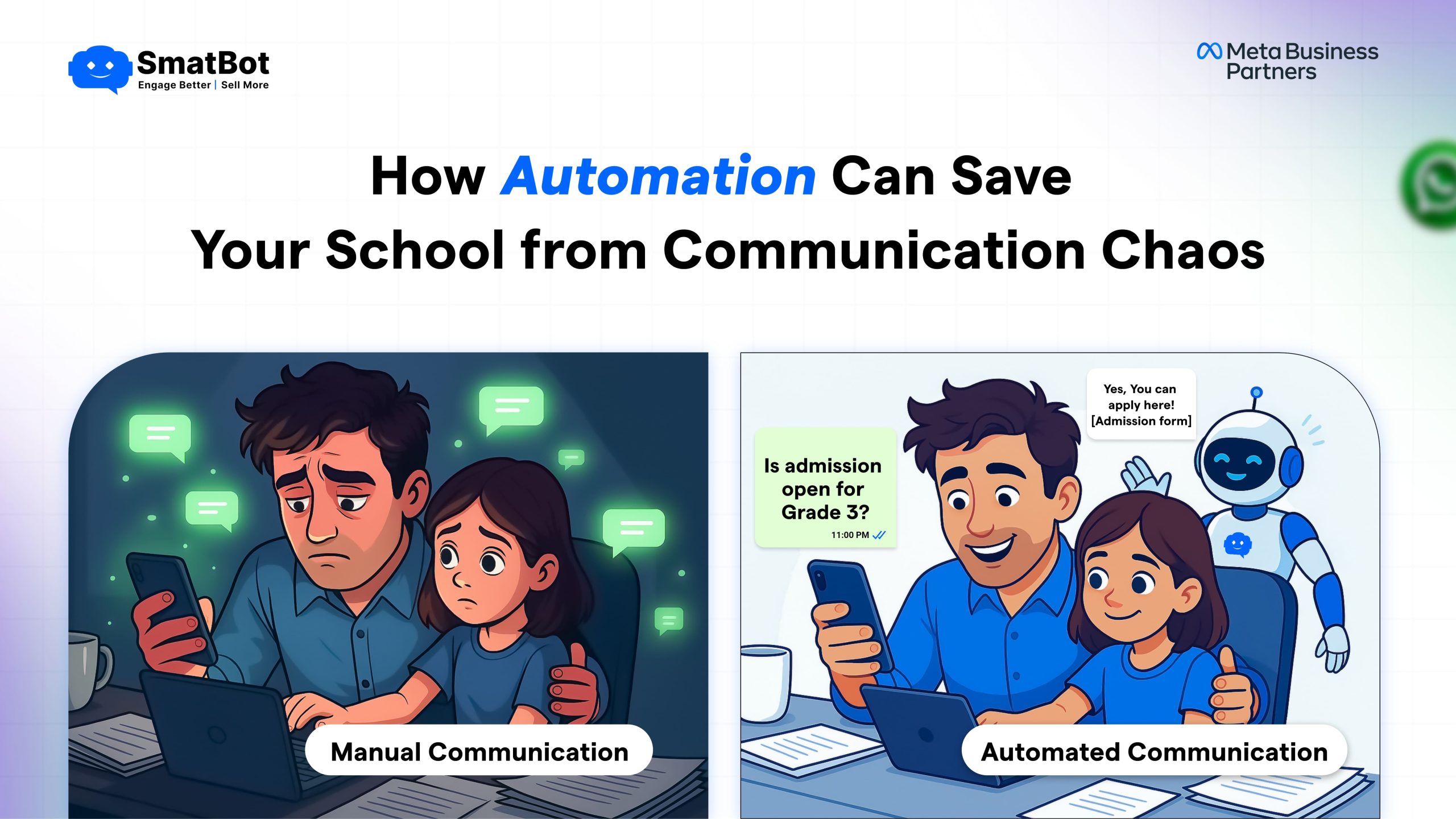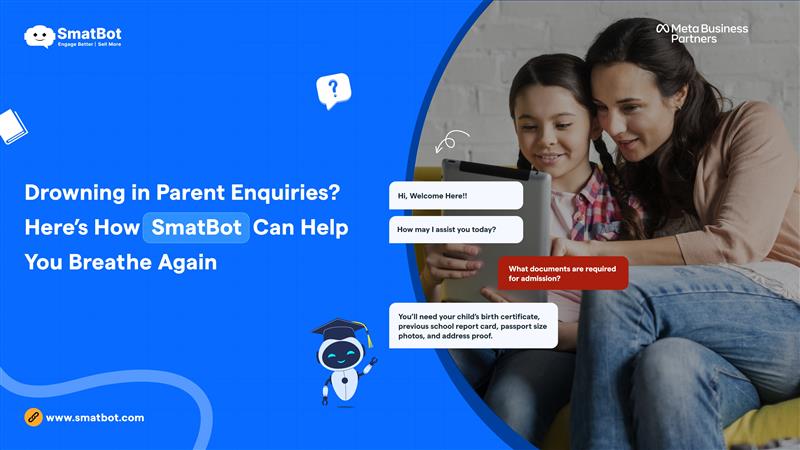From Fiction to Reality: AI’s Disruption in Food Tech
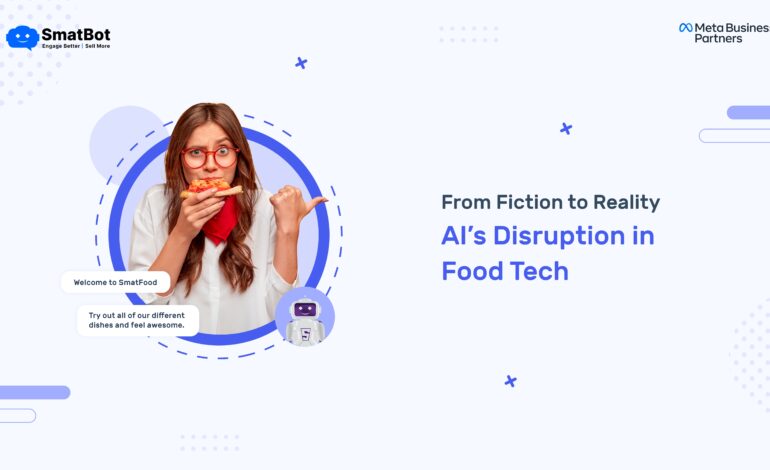
The food-tech industry is among the fastest-growing industries in the world. However, this growth has led to several challenges such as food waste and food safety that need to be addressed. AI in foodtech has evolved into a potent solution for addressing and resolving such issues.
With the help of advanced technologies like conversational AI and generative AI, foodtech businesses can benefit in a variety of ways. If you belong to the foodtech sector and want to gain valuable insights into the disruptive potential of AI in this field, then this blog is all you need.
In this post, we’ll shed some light on the potential of AI in the FoodTech industry, including its use cases, benefits, role, and more. We’ll also share examples of big names in this industry who are leveraging the full potential of AI in their businesses.
So without any further ado, let us begin by exploring the role of AI in the foodtech industry.
Role of AI in the Food Industry
The food industry entails not only the preparation of food but also various tasks that must be executed with precision. A single mistake in any of these tasks can result in significant problems. Conversational foodtech has the potential to enhance the efficiency of these tasks.
Below, we share the primary roles of AI in the food tech industry:
- Sorting food
Traditional food sorting methods have relied on hundreds of human workers standing in line to manually categorize high-quality food items. This process is monotonous, and despite the skill level of the human workforce, some subpar food items might go unnoticed and end up reaching customers.
AI and ML have been developed precisely to eliminate these kinds of errors. Furthermore, they can sort vegetables based on their colors, effectively reducing food waste. By supplying this technology with your specifications and instructions, AI ensures that all processed food meets your standards.
Perhaps the most advantageous aspect of AI is its automation of tasks. This allows food companies to cut costs associated with manual labor. AI-powered food machines incorporate advanced X-ray scanners, cameras, and other tools that collaborate to analyze and assess the quality of food, thereby meeting your specific needs and requirements.
- Trend analysis
AI in the food industry can also assist you in analyzing the prevailing customer demand and requirements. Through the utilization of big data analytics and machine learning models, AI can extract valuable insights about customers’ needs and desires, ultimately guiding product development.
This stage is crucial for businesses as it necessitates the selection of a product that has a higher likelihood of succeeding in the customers’ markets. AI can provide you with the confidence to unveil specific products with a range of characteristics.
Leveraging this technology enables you to serve customers’ needs more efficiently and effectively target the appropriate audience across the market.
- Speed and efficiency
AI plays a crucial role in improving the efficiency and speed of food production processes. Compared to traditional human-handled production processes, AI-enabled machines can produce high-quality products quickly and in large quantities. This gives businesses a competitive edge and generates more revenue.
- Supply chain management
AI algorithms can also help in supply chain management. It utilizes artificial neural networks to monitor the food shipment process throughout all supply chain stages.
The primary role of AI is to generate accurate forecasts for inventory management and pricing. This can help you plan shipments, minimize waste, and lower shipment costs.
Many food companies ship their products all over the globe, making it hard to track shipments. However, AI can give you a clear overview of the entire or complete process, allowing you to better understand the shipment process.
- Food safety compliance
Safety is the utmost priority in the food industry because any safety mistakes can lead to serious health issues for customers. Every employee or worker in direct contact with the food is required to wear gloves, appropriate attire, and maintain proper hygiene. However, tracking hundreds of employees and ensuring everyone follows safety rules poses a significant challenge for humans.
AI-enabled cameras can be extremely helpful in this scenario, as they possess the capability to monitor all workers and promptly alert the manager in the event of a rule violation. These cameras can rapidly identify safety breaches, such as non-compliance with regulations. The AI can monitor production in real-time and send warnings or notifications to workers, employees, and managers.
Top Use Cases of AI in the Food Industry
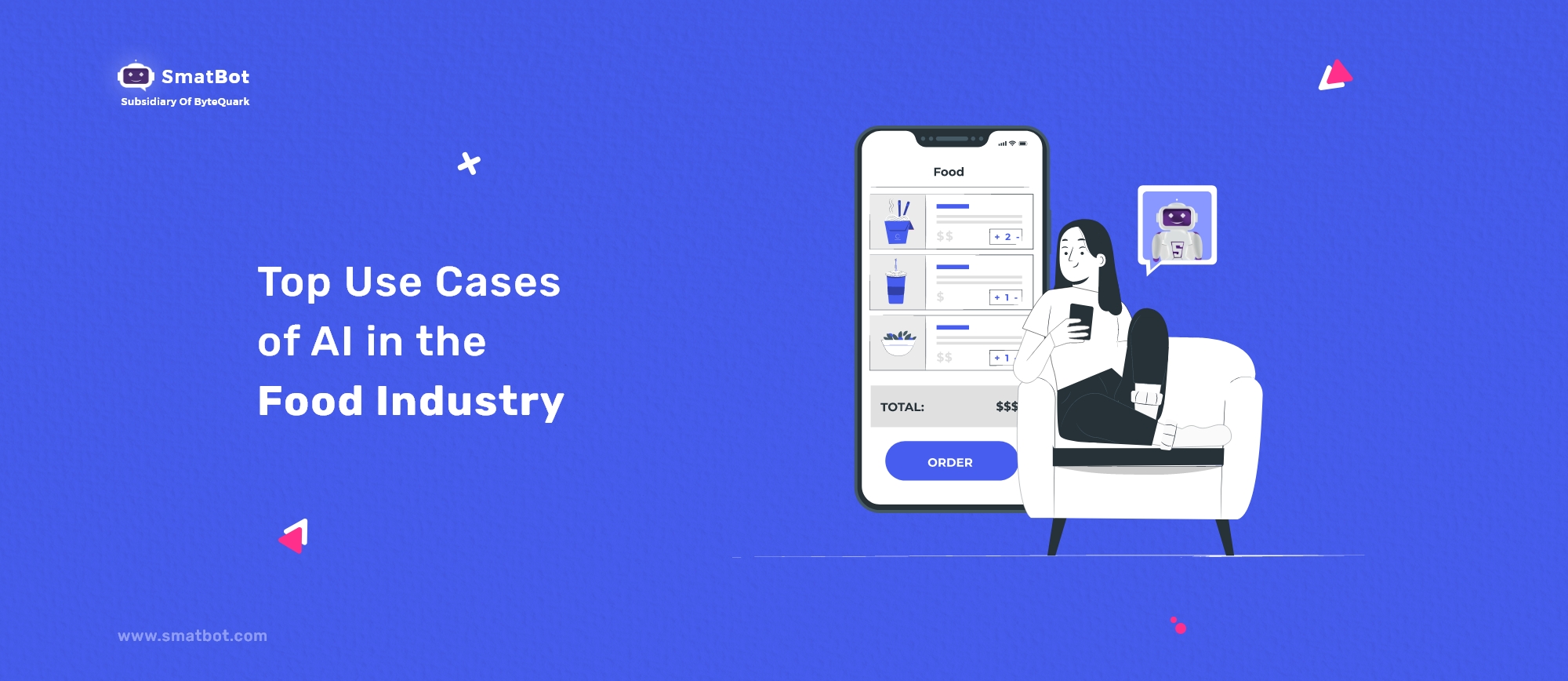
AI can be used in several ways in the food industry. Below are the top use cases of AI in the food industry:
- Streamlined order management
The AI-driven order management system is vital to streamlining the process of food delivery because it can lead to excellent results. It assists food companies in various tasks, including ensuring timely delivery. This helps ensure accuracy and efficiency.
- Optimized food chain management supply
AI can also optimize the entire or complete supply chain in the food industry. It can also help you overcome challenges in supply chain management by ensuring timely delivery and reducing waste. It uses real-time monitoring and predictive analytics to overcome these challenges. Below are the top benefits of optimizing food chain management supply with AI:
- Maximize revenue
- Target delivery to meet the predicted demand
- Reduce or eliminate human errors
- Streamline product delivery processes
- Office operation and customer management
The impact of AI goes beyond the customer-facing aspect. It can enhance customer engagement by implementing a virtual receptionist during order placement and other crucial interactions in the food outlets.
These AI-powered chatbots or assistants offer a personalized and efficient experience that can increase the overall satisfaction of customers.
- Rapid A/B Testing
AI and machine learning can expedite the A/B testing process, making it more efficient and affordable in terms of pricing. This technology can also segment your customers.
It means that AI has the potential to identify customers with similar purchase behaviors. Companies can use these insights for marketing and product launches. Below is an overview of how AI does rapid A/B testing:
- Streamline development
- Refine the targeted customer base
- Analyze results for rapid prototyping
- Evaluate the sales impact of various innovations
- Target marketing campaign
The integration of conversational foodtech empowers food-tech companies to gather valuable insight from their interactions with customers. Using these insights, businesses can create and implement targeted marketing campaigns.
AI-driven chatbots excel at identifying different customer segments and offering personalized product promotions by analyzing the following factors:
- Customer preference
- Order history
- Behavior
This approach enhances the performance of marketing efforts, boosts conversion rates, and encourages repeat purchases.
- Automated loyalty tier
Foodtech companies can use automated loyalty tier upgrades by implementing the right AI-driven solutions. The AI tool monitors customer spending habits and program engagement to identify those who are eligible for higher tiers.
As customers move to higher tiers, they gain access to better rewards and exclusive perks. This AI-powered process not only ensures a seamless customer experience but also motivates them to continue ordering for special perks.
- Decision making
AI and machine learning technologies contribute to data-driven decision-making processes in the food sector. AI empowers decision-makers to make informed choices that might lead to better results and the growth of the business.
- Predictive maintenance
Each component of every machine across all industries has a lifespan that could be shortened due to poor maintenance. The gap between machine failure and human detection of issues must be minimized.
AI can identify patterns and predict when the food machine requires maintenance. The technology can alert the analyst when the machine needs maintenance. This transition from predictive to preventive maintenance is crucial.
Disruption and Benefits of AI in Food Tech

Like any other industry, AI benefits the food tech industry in several ways. Below are the top benefits of AI in Food tech:
- Enhancing sustainability and accessibility
AI and conversation automation have the potential to enhance sustainability and accessibility in the food tech industry. Such technology can support the smart planning of meals, optimize ingredient usage, and reduce waste.
By analyzing user preferences, including dietary restrictions, and available ingredients, AI can suggest recipes that effectively use existing ingredients, minimize excess, and repurpose leftovers.
They can also make food tech more sustainable, reducing environmental impact and making culinary resources more accessible to people with specific dietary needs.
- Measures edibility to reduce food wastage
Food waste is the most common problem in the food industry. AI can help reduce food wastage by measuring edibility. It also helps in the early detection of factors causing food waste. For instance, supermarkets can leverage AI-driven programs to scan and identify the edibility of produce in order to prevent waste.
Moreover, this AI technology helps the food industry by pricing products transparently and delivering them to customers efficiently, which saves money and reduces food waste.
- Unlocking innovation
AI and conversational AI unblocks new destinations for innovation in the food industry. These technologies allow chefs, food enthusiasts, and home cooks to push culinary limits and explore innovative cooking techniques.
Moreover, they can facilitate data-driven insight, helping food companies in the following ways:
- Identify emerging trends
- Predict customer’s preferences.
- Develop new products that resonate with increasing customer demand.
- Interactive conversation with virtual food expert
Conversational AI also allows interactive and interesting conversations with virtual food experts. Users can ask questions, seek advice, and engage in discussion on food-related topics. This enables the users to have an informative and personalized conversation.
It serves as a hub of knowledge for food lovers, improving learning and collaboration within the ecosystem of food tech.
- Improve quality
Businesses in the food industry are very cautious about the quality of food products. These companies can use AI to monitor the whole production process, ensuring high quality. AI surveillance and monitoring ensure accurate inspection for any quality issues in the products.
It reduces human errors and boosts quality standards. Most importantly, AI can discern any potential safety hazards and fix them before the contamination causes any harm to the food products’ quality.
Challenges of AI in the food industry

AI is helping the food industry in many ways. However, there are several challenges that AI faces within this sector. Below are the top challenges of AI in the food industry:
- Food security
Food security is among the top challenges that every food company in this industry faces. AI is effectively handling this challenge by using a monitoring system. The following are how AI ensures food safety:
- Analyzing manufacturing hazards
- Monitoring production trends
- Notifying manufacturers of identified issues.
- Detecting customer health fraud
- Increasing pricing
Increasing pricing is another crucial challenge in the food industry. There are uncountable AI algorithms intended for the dynamic pricing of perishable items that can help you with this challenge. These algorithms link pricing to expiration dates, thereby optimizing shelf life and cost savings.
- Supply constraints
Supply constraints are another significant problem in the food industry. But AI has already solved this problem, as it has the potential to increase efficiency and profitability at all stages of production. It provides demand forecasting information and optimizes transport routes to decrease fuel costs.
Examples
Conversational AI has become an essential part of several food companies. Below are the top 3 examples of chatbots in food tech:
- Domino’s: Domino’s Pizza restaurant chatbots take orders and provide information about delivery times.
- Blinkit: Blinkit has used AI and ML to increase supply chain efficiency and minimize the time of delivery.
- Swiggy AI: Swiggy AI is an upcoming feature of Swiggy that will enable voice typing and tailored recommendations for food and groceries.
Conclusion
Chatbots, or AI in foodtech, are potent tools that are transforming several aspects of the food industry. It holds many benefits, including improved quality, enhanced sustainability, and more. This technology is working to solve many challenges in the food industry. We hope the information provided in this article has helped you understand the potential or power of AI in the food industry.
Furthermore, if you are a food business looking to improve your operations and customer service, then you must incorporate AI-powered chatbots like SmatBot into your workflows. SmatBot can help you transform and scale your food business.

